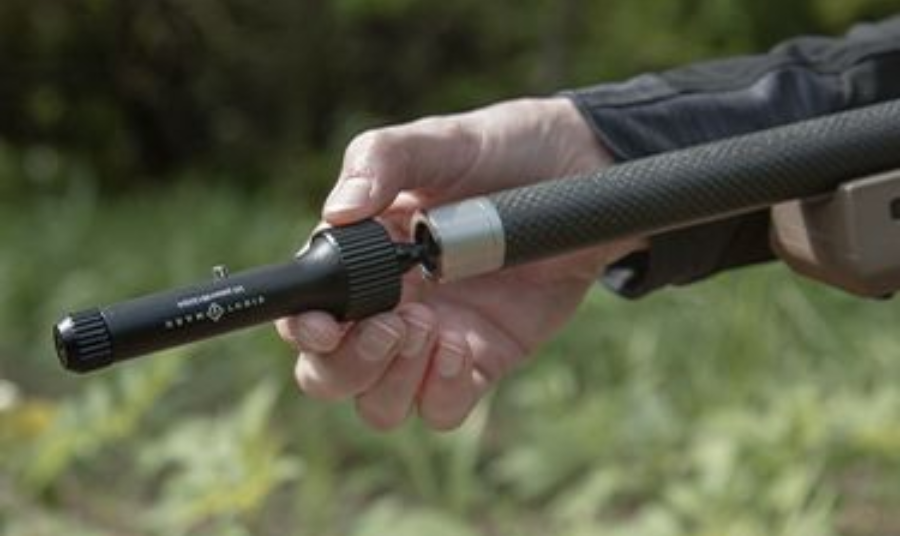Laser boresights are one of the most overlooked tools in a shooter’s kit. For new shooters, especially, they solve one of the most frustrating and expensive parts of owning a firearm: getting an optic on target for the first time. A boresight does not eliminate the need to confirm with live fire, but it saves you the headache of wasting half a box of ammo just to get your red dot or riflescope “on paper.” With the right technique and the right gear, you can walk into the range confident that your first few shots will land where they should.
What a Laser Boresight Really Does
At its simplest, a laser boresight projects a red or green laser down the barrel of your firearm. That dot shows where the muzzle is pointing, which lets you align your optic to match the barrel’s direction before a single shot is fired. It is a tool for alignment, not a magic bullet that replaces proper zeroing. One of the most common beginner mistakes is assuming that because the laser dot is visible fifty or a hundred yards away, you can use it as a perfect aiming reference at those ranges. The truth is that environmental factors, bullet drop, and even slight hand movements will ruin accuracy at long distances. Laser boresighting is meant to be done at short ranges of about ten to twenty-five yards for pistols and twenty-five to fifty yards for rifles.
Why a Universal Boresight Works Best
Shooters quickly learn that one firearm leads to another, and that buying a separate tool for each caliber gets expensive. A caliber-specific boresight is only good for one chambering, while a universal laser boresight uses threaded adapters to fit multiple calibers. Sightmark’s Triple Duty Universal Boresight is the most practical choice for new shooters because one device can be used across handguns, hunting rifles, and AR-pattern rifles. The only mistake to watch out for is selecting the wrong adapter bushing. Beginners sometimes jam in the wrong size and wonder why the fit feels loose. Take a moment to match the correct bushing to your caliber, and the device will sit properly in the barrel.
How to Boresight the Right Way
The process itself is straightforward. First, clear your firearm and ensure no live ammunition is anywhere on the bench. Insert the boresight into the muzzle with the proper adapter, then activate the laser. Set the firearm on a stable surface and adjust your optic so that its reticle or dot matches where the laser is pointing. That’s all there is to it—except for the part that makes or breaks the process: stability.
Many new shooters try to balance their rifle across their knees or hold their pistol in one hand while making adjustments with the other. That kind of wobble means your boresighting is only as accurate as your ability to hold still. The better approach is to clamp the firearm into a stable rest. Kopfjäger’s Reaper Grip tripod system is one of the best tools for this job because it can lock down rifles and even pistols while you fine-tune your optic. By eliminating shake, the tripod ensures the laser stays true and your adjustments actually count.
The Importance of Stability
Stability cannot be overstated. Even the tiniest shift at the muzzle translates to several inches of error downrange. If you are aligning a scope with ¼ MOA clicks, those micro-movements become exaggerated, leaving you worse off than when you started. A tripod with a secure grip not only keeps your optic adjustments honest but also saves you time. You will not need to keep rechecking the alignment because the firearm is held perfectly steady throughout the process.
Myths and Misconceptions
One persistent myth is that boresighting alone is enough to zero your gun. The laser puts you close, but you must still fire live rounds and adjust accordingly. Another misconception is that you can boresight in full sun. In bright daylight, the laser will be washed out, and you will end up squinting for a dot that is too faint to matter. A shaded environment, a garage, or an indoor range is a better setting. Finally, do not assume small hand tremors or a shaky table are acceptable. Every shift in the muzzle moves the laser dot, and if the dot moves, your adjustments are wasted.
Pistols and Rifles Compared
Boresighting works equally well for both pistols and rifles, but there are some differences. With pistols, you are usually working with shorter sighting distances and either a red dot or iron sights. A laser boresight makes alignment fast, particularly for pistol red dots that can otherwise take many frustrating rounds to get dialed in. Rifles demand a little more care. Begin at twenty-five to fifty yards, not a hundred. The goal is to guarantee that your shots will be on paper when you stretch to longer ranges. Starting too far out almost guarantees you will be hunting for impacts instead of making efficient adjustments.
From Boresight to Live Fire
Laser boresights save money and time, but they are only the first step. Once your optic is aligned with the laser, you still need to confirm with live fire. A proper zero accounts for the quirks of your ammunition, your barrel, and your optic. The benefit of boresighting is that when you arrive at the range, you will already be close. Instead of burning through twenty rounds just to find the target, you may only need three or four to achieve a clean zero. Using a stable tripod at the range carries that accuracy even further, especially when zeroing a rifle scope.
Save Time, Save Ammo, Shoot Smarter
Laser boresights are one of the simplest investments a new shooter can make to improve their time at the range. A universal option like Sightmark’s Triple Duty Universal Boresight means you can use one device for nearly every firearm in your collection. Avoid the common mistakes—boresighting too far, trying to do it by hand, skipping the live-fire step—and the process will be smooth and frustration-free. For best results, clamp your firearm into a solid rest like Kopfjäger’s Reaper Grip tripod. The combination of a reliable boresight and a stable platform is the fast track to accuracy for beginners who want their firearms zeroed without wasting time or ammunition.
Which boresight is best for a 9mm pistol?
A universal laser boresight is the most practical option for a 9mm pistol. Instead of buying a caliber-specific unit that only works for one cartridge, a universal model like Sightmark’s Triple Duty Universal Boresight covers multiple firearms. With the correct adapter bushing installed, it fits snugly in a 9mm barrel and gives reliable alignment.
What’s the best way to sight in my rifle with a laser boresight?
Start at a short distance—25 to 50 yards—rather than stretching out to 100. Place the firearm in a stable rest, ideally a tripod with a secure clamp such as the Kopfjäger Reaper Grip, and activate the boresight. Adjust the optic until its reticle matches the laser dot, then confirm your zero with a few live rounds.
Is the Sightmark boresight accurate and easy to use?
Yes. The universal Sightmark model is straightforward for beginners, and when used correctly it is very accurate. The key to success is stability: if the firearm is clamped securely, the laser gives a consistent point of reference that makes optic adjustments quick and simple.
How do I use a laser boresight to sight in my rifle?
Unload the firearm and insert the boresight with the proper adapter. Secure the rifle in a rest or tripod, switch on the laser, and move the optic’s reticle until it lines up with the dot. Once aligned, head to the range and fire a few shots to make fine adjustments. Boresighting alone gets you close, but live fire finishes the job.
Are red dot sights better than iron sights for beginners?
Red dots are often easier for new shooters because they provide a clear point of aim without the need to align front and rear sights. When paired with a laser boresight, a red dot can be set up and zeroed much faster than irons, saving both time and ammunition.




